Nowhere else have we travelled where the sky so big, the light so clear, the landscape so revealing, the quiet so widespread, the solitude so profound as in the thanksgiving-yellow plains of southwestern Saskatchewan.
Of the many things we’re thankful for this year, our autumn experience at Grasslands National Park claims the foreground. Maybe the perspective of a long view is what we need now.
Despite growing up in Saskatchewan and having good friends (Karol and Don) who raved about the area, neither of us had been to this southwestern corner of the province near the Montana border, land of rolling hills, rugged coulees and steep ravines. Sharon Butala’s homeland, geology stripped bare to an “ancient skeletal landscape.” Where Wallace Stegner found “a wild freedom, a closeness to earth and weather.”
Although recommended back in 1956, Canada’s first national park to protect mixed-grass prairie didn’t open until 2001. According to Nature Canada,” less than one per cent of the native prairie in Saskatchewan and Alberta enjoys any official protection. It’s little wonder that the International Union for the Conservation of Nature declared temperate grasslands to be the least protected and most endangered ecosystems on the planet.”
Here, plant life thrums. A cloudburst Sunday morning poured rain for the entirety of our eight-hour drive to Val Marie at the park’s edge, rinsing the sky, refreshing the earth. Growing here are more than 40 different types of grasses (like blue gramma grass, historically a favourite of the bison, and needle-and-thread grass that gets its name from sharp awns), and innumerable native wildflowers and other plant species. What’s important in this ecosystem is that no single species of grasses or flora are dominant. Geologists have found fossilized land and sea creatures from 80 million years ago—the first dinosaur fossil in the country was discovered here in 1874. Audio specialists say Grasslands is one of the quietest places in North America. Meteorologists claim it has Canada’s best matter from space. Astrologists point out that it has one of Canada’s darkest night skies, second only to Jasper. Historians note teepee rings and other archaeological artefacts from First Nations settlements date back 10,000 years.
The park is home to the Plains Bison, the largest land animal in North America. Three of them were breakfasting across the road from Ecotour pull-off #3 where we parked to begin hiking. At one time 30 million bison roamed the continent, decimated to 2,000 by 1890. Grasslands National Park introduced an initial herd of 71 individuals, (30 male calves, 30 female calves and 11 yearlings) in 2005 that has flourished to number upwards of 350 bison.
Our most amazing experience was seeing the one-of-a-kind Pronghorn just outside the park. A cool fact: Although its scientific name, Antilocapridae, translates to “American antelope goat” the Pronghorn is neither antelope, nor deer nor sheep. A is a unique family. The fastest animals in the western hemisphere, pronghorns can run up to 100 kilometres per hour! The only land animal on the planet that’s faster is the cheetah, which can sprint up to 120 kilometres per hour, but the pronghorn can run at top speed for a far longer time. Male and female pronghorns are also unique in that they’re the only animal in the world with forked horns.
Grasslands is the only place in Canada where Black-tailed Prairie Dogs still live in their native habitat, in 14 densely populated colonies called “Dog Towns.” A menace digging up our farmland, gophers, cousins to the prairie dogs, weren’t thought to be cute when we were kids. But coteries of prairie dogs charmed Magellan and I with their muzzling, an affectionate grooming ritual. Prairie dogs are the food supply of the wily coyote and Ferruginous Hawks. When there aren’t enough prairie dogs to eat or other pressures cause the coyote population to decline, female coyotes release a hormone that increases their litters—from four pups to numbers in the high teens. From the population we saw scurrying around at Top Dog Town, female coyotes at Grasslands won’t be releasing this hormone anytime soon.
For six hours we gambolled along Timbergulch Trail, a 17 kilometre hike winding through three coulees, herds of bison roaming in the distance, grasses whistling in the whisper-soft wind, the pure dome of the September sun exuding a dry warmth (28°C) over a landscape verging on infinity. For the most part, we followed the white-stick path but random hiking and backcountry camping are allowed here, rare freedoms in national parks. Our experience was exactly as Stegner describes in Crossing to Safety,
the air hummed and buzzed with insects, but their noise was a form of silence, not a sound, and over the whole hill lay a cushiony emptiness that absorbed and blotted up every vibration of air.
Grasslands National Park covers about 500 sq km in two un-attached sections: the West Block following the Frenchman River Valley that Magellan and I visited; and the East Block of mountain uplands and badlands. Clearly, you need to spend far more time spread over all four seasons to truly appreciate this vast wilderness park. Eventually as the government purchases more land, the park will almost double in size to 900 sq km. This seems large doesn’t it? But at one time, grasslands covered 3.6-million sq km, forming a triangle from Alberta, Saskatchewan and Manitoba down through the Great Plains to southern Texas and stretching 1,600 kilometres from western Indiana to the Rocky Mountains.
In 2018/2019 about 15,750 people visited Grasslands and we’ve read that a lot of them are researchers like the guy we saw from the University of Alberta. I don’t know if attendance increased or decreased this year but Magellan and I were thankful that at 5:15 in the afternoon, we got one of the nicest spots in the Frenchman Valley Campground.
As Wallace Stegner wrote in his “Wilderness Letter” to the Outdoor Recreation Resources Review Commission,
“These are some of the things wilderness can do for us. That is the reason we need to put into effect, for its preservation, some other principle than the principles of exploitation or “usefulness” or even recreation. We simply need that wild country available to us, even if we never do more than drive to its edge and look in. For it can be a means of reassuring ourselves of our sanity as creatures, a part of the geography of hope.”
Navigation
Along with the park’s brochures, I found this article in inaturalist most helpful in researching Grasslands NP.
This week I was consumed, for the first time I shamefully admit, by the writing of Wallace Stegner. Writer of memoir, history, biography and more than a dozen works of fiction (Angle of Repose, The Big Rock Candy Mountain), Pulitzer-prize winner, often called “The Dean of Western Writers,” Stegner spent a few of his early years on a farm in the Grasslands area, where his family attempted, unsuccessfully, to grow wheat. A vision of community is a central ethical and aesthetic ideal in Stegner’s work, which A. O. Scott in The New York Times describes as “an allegory of the West itself, which Stegner saw as perpetually and fatally rived between a destructive, antisocial individualism and a too often stymied longing for stability and community.” After earning a PhD in English, he taught at the University of Wisconsin and Harvard and founded Stanford’s creative writing program, where he mentored one of my favourite American naturalist writers, Edward Abbey. He shaped public policy with his direct involvement in major conservation issues from the postwar years until his death. In her introduction to his book Crossing to Safety, (which I’ve just finished and highly recommend), Terry Tempest Williams writes that Stegner shows us, “it is love and friendship, the sanctity and celebration of our relationships, that not only support a good life, but create one…He honored both the power of the individual and the individual’s place inside community.” My friend Ruth Ann sent me this link from Stanford about Stegner’s personal life (1901-2000).
We’re thankful for Don’s Place in the town of Val Marie, where we spent Sunday night (it was too rainy and windy for Rove-Inn to host us), which will get its own blog one day.

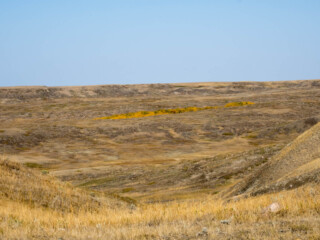
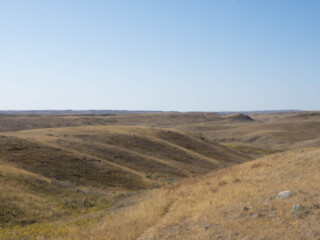
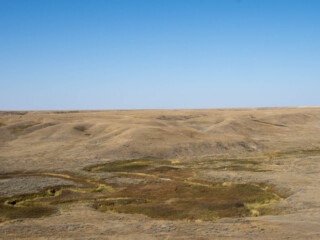


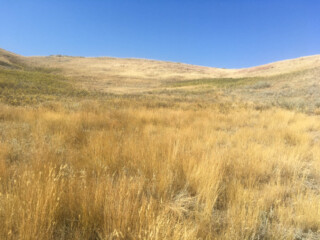
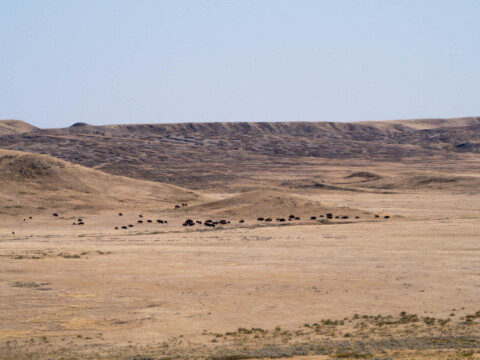


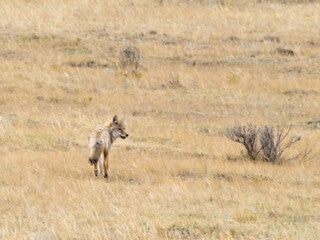

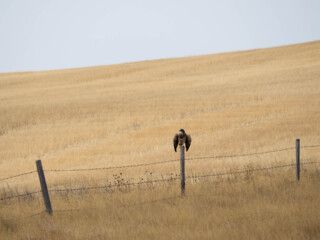
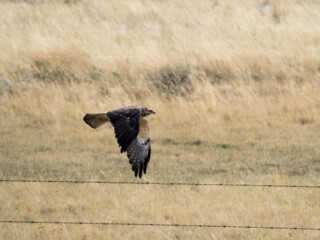

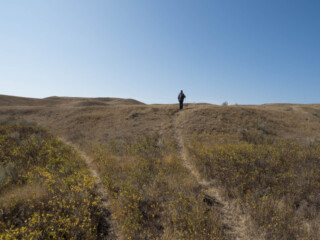


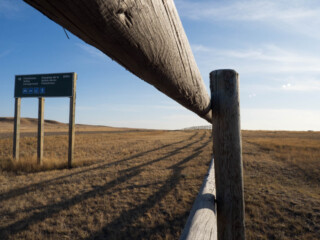

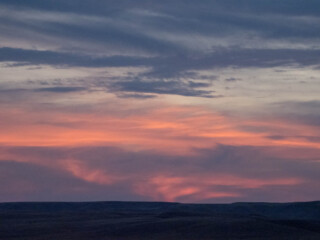
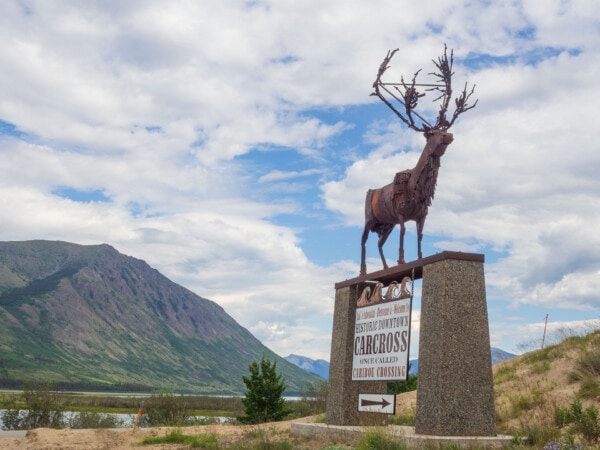

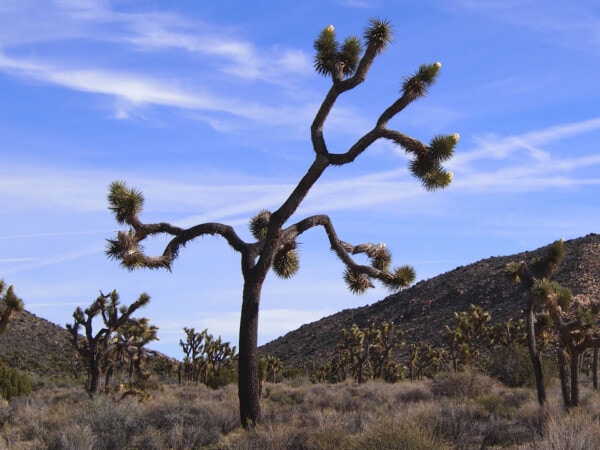

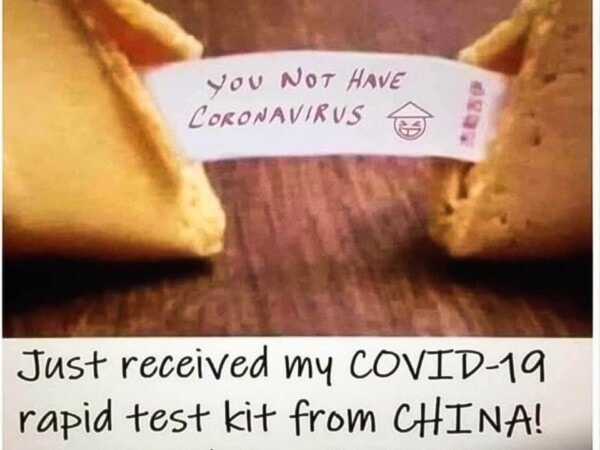
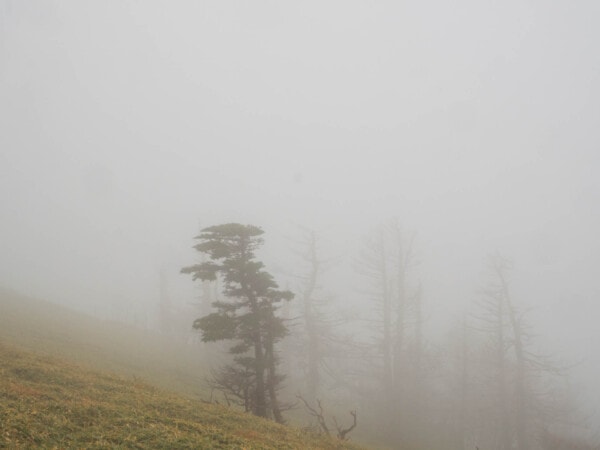
15 Responses
Who is the Author of this article I need to cite it for school
If you mean the author of the Grasslands blog, it’s me, Gloria Sully, aka Spice.
You know how much I love the prairies and those “big skies.” I am so glad you enjoyed your time and hope that you get to visit Grasslands East soon. It is quite different but stunning as well. Thank you for the descriptions of the landscape and it’s inhabitants as well as the pictures. It brings back many memories.
Grasslands East with you one day—that’s our plan.
Well done! I’d sure like to see this area one day, so sure appreciate your views.
Thanks to the steady work of the good people of our home province, an initiative started in 1956 by the Saskatchewan Natural History Society and was continued by others for half a century has come to fruition—with ambitious plans for the future.
I spent a good part of my youth tramping around a pretty good chunk of Loon Creek; a tributary of the Quapelle valley near our family farm northeast of Regina.
My eldest sister bought the land from my Dad’s estate and donated it to the Nature Conservancy of Canada.
It has been a challenge to work toward bringing the land back to healthier native ecosystems but she has had significant success.
Our part of Loon creek is not nearly as wide as the Quapelle valley but it is equally as deep (Because it is very near its entrance to the Valley), so it makes for very dramatic and interesting topography.
The vegetation is virtually identical to that in Grasslands.
I find myself thinking about this part of the planet frequently.
Thank you for the great descriptions and photographs..
Wade
What a lovely story Wade. Coincidentally, in reading Braiding Sweetgrass by Robin Wall Kimmerer, I’ve learned (you probably know this) that an enzyme in the saliva of grazing buffalo stimulates plant growth and that buffalo don’t overgraze; they move on and don’t return to the same place for many months!
No, Although I was aware that buffalo don’t overgraze like (I well know that) cattle do (my Dad was constantly frustrated with his partners in the Loon Creek group that put more than their agreed allotment of head of cattle on the undivided pasture lands); I didn’t know about the enzyme.. Fascinating! What a marvellous place this planet is…
It has been so gratifying to see how our Loon Creek pasture land has recovered.. (My sister Ruth had our land fenced off from the former partners’)
Thanks for the introduction to a park I have yet to see, it’s on my list just not yet invoked.
What your pictures and story tell, is what everyone thinks of Saskatchewan, a severity of flatland, outdone only by the “living skies”, indeed a place to savour, sometimes nothing is the hiding place for our dreams and the grasslands cleanse the air like no other natural filter.
The burrowing owl also calls this area home, so glad to see the Bison being returned as this indeed is their homeland, an excellent neighbour for the pronghorns that need this landscape to stretch their legs to the horizon.
Great pictures of the raptors, always a good sign that we are doing something right when we see great numbers of them. 👍👍
Happy Thanksgiving to you all, stay safe. 😷🦃🦃🦃🦃🦃🦃
From my Perspectives’ days, I remember talking to an environmentalist from PanCanadian about the Company’s efforts to save the burrowing owl in southwestern SK and then writing about it in their annual report but I’ve never seen one, yet that is…
Love that prairie sky and great wildlife shots. Happy Thanksgiving!
What treat to see such a flourishing environment, especially when you see the mega-agrifarm operations nearby.
I love that landscape and I love Stegner. Thanks for evoking memories of both.
Discovered Angle of Repose is listed among the top 100 novels of the last century.